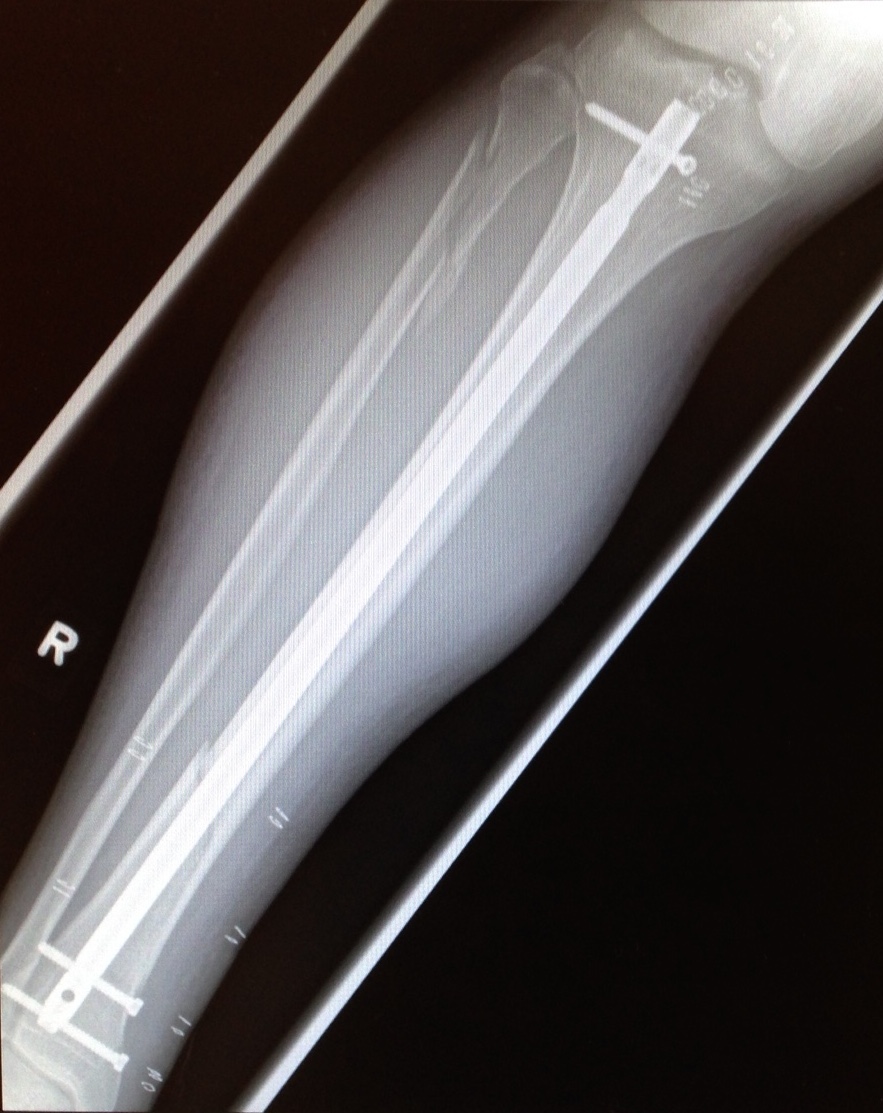Three weeks ago today everything changed, 12 km behind the largest mountain in the Canadian Rockies, on a steep slope of unstable shale. Broken and wobbly leg bones. A fabulous EMT on holidays to take charge, layers of splints, 8 volunteers to carry a big man down to a helicopter waiting to get husband Peter to an ambulance, then a small hospital, then a large hospital for surgery. Angels of water kept us hydrated on a hot afternoon. Angels of strength carried our packs down the mountain for us to collect later. Angels of friendship, with big eyes, gave high-fives on their way by.
At long last, Peter found himself in the warehouse – a nursing station that looked like the halls of The Home Depot. Shelves of supplies in the corridor, nurses who showed up to do the bare minimum and left him to fend for himself. Swelling that means a 5 day wait for surgery will be delayed? Well, get the ice for yourself. Motrin to keep the swelling down? Well, we’ll only get that for you if you ask for it. The trick is, as with all do-it-yourself endeavours, it only works when you know what you are doing.
When you can’t move, you sit and wait, hoping for the best. In Peter’s case, he laid on a shelf, and someone came to dust him off now and then to check if he still had a pulse. Mostly, he hoped that no one forgot he was there and needed attention.
Then the call on day 6, on a minute’s notice, for surgery. In the operating room, purpose is clear. Here, what will happen is explained in detail. There is even a laugh – will they find a nail long enough to fit the long tibia bone in his leg (he’s 6’6″). Then he’s asleep and they get to work with a big nail, a drill, mallet, screws and a screwdriver. The power and hand tools of The Home Depot merge with the technology of X-ray vision to guide the work of deft hands to put things back in place and set Peter up for the needed mending.
The next day, as Peter hobbled about on one leg, he was tentative. He’d spent 6 days on his back, and the last time he was vertical he violently twisted himself into this predicament. As I watched, this question came to mind:
It is possible to hobble with confidence rather than fear?
I thought of the warehouse nurses. I have no idea if their indifference to their work is endemic to the whole hospital, or to their unit, but their lack of care was startling. Among the nursing staff, the disconnect from self and work was palpable. The collective disconnect was even more palpable. In contrast, a custodian was friendly and careful to make sure an extra chair arrived to accommodate our family of four. An orderly attending to another patient made sure a wheelchair fit Peter properly to get him to our car and take him home. The nurses didn’t help send him home well or safely at all. They were hobbling with a lack of confidence in their purpose to care for people waiting, in pain and discomfort, in the unknown.
As I watch Peter figure out his relationship with crutches, more questions come to mind:
- What crutches are in my life?
- When are crutches needed, not needed?
- How do I know when I am done with crutches?
- What crutches am I still using unnecessarily?
- Do I even notice when I’ve gotten rid of them?
In many ways, the leg repair is do-it-yourself. Peter’s body will heal itself, but there are specific junctures where he needed the help and care of others. He couldn’t get off the mountain by himself. He couldn’t keep the swelling down by himself. He couldn’t get the bones in place by himself. In the weeks to come, he will test out his new leg, Mr. T he calls it. He will slowly put weight on the leg and see how he and Mr. T are going to get along.
He will slowly stop using the crutches.
Eventually he will throw the crutches away.
Then he will decide about going back to the mountain.

